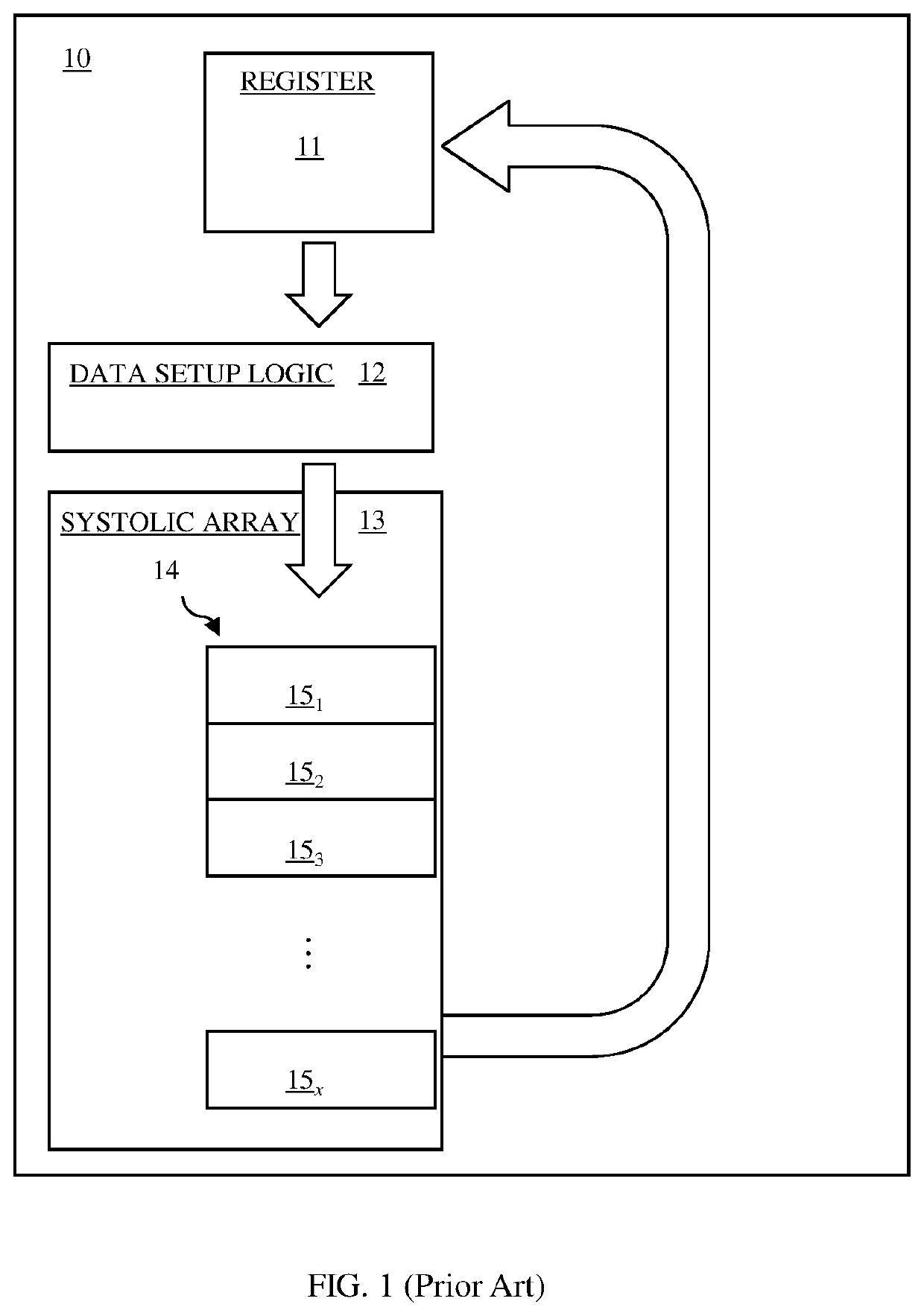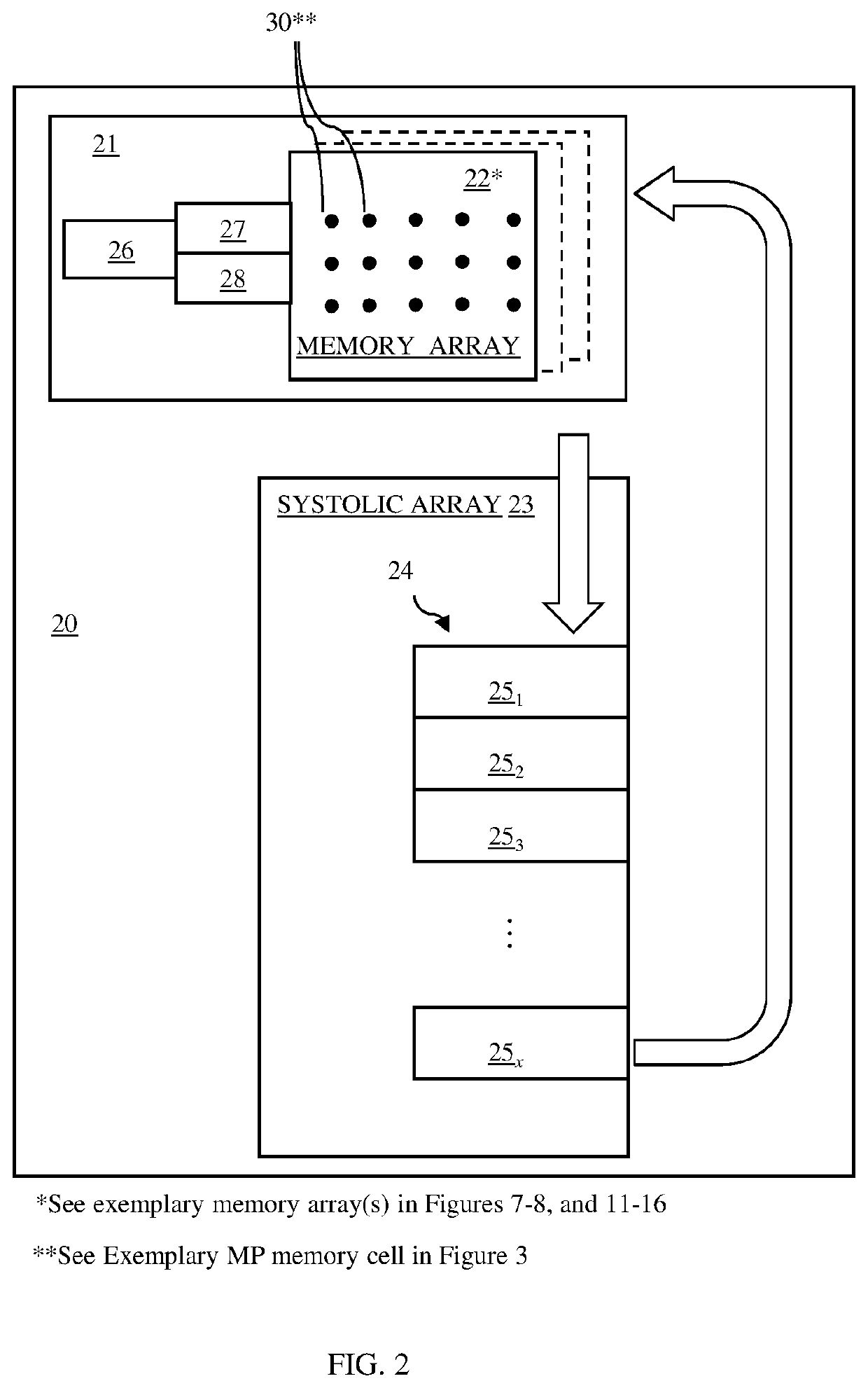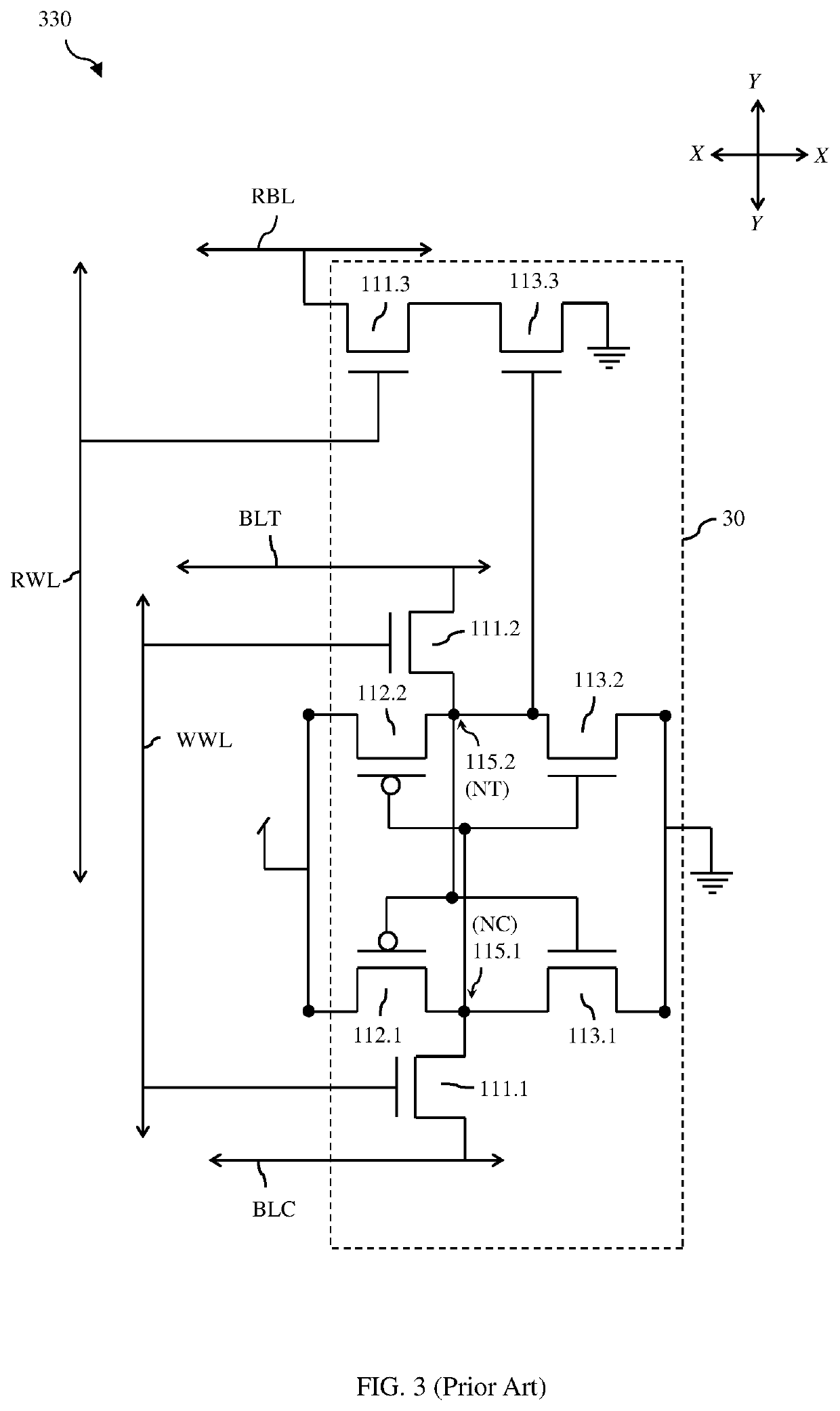Multi-port memory architecture for a systolic array
a multi-port memory and array technology, applied in the field of systolic arrays, can solve the problems of costing both and the cost of discrete memory setup logic blocks for each pe, and achieve the effect of saving chip area consumption and energy consumption
- Summary
- Abstract
- Description
- Claims
- Application Information
AI Technical Summary
Benefits of technology
Problems solved by technology
Method used
Image
Examples
Embodiment Construction
[0022]As mentioned above, in order to save area and energy, processing units that incorporate systolic arrays (also referred to as systolic processors) have been developed. Referring to FIG. 1, an exemplary processing unit 10 includes a memory 11 (e.g., a register or buffer) and a systolic array 13. The systolic array 13 includes a pipeline 14 of processing elements (PEs) 151-15x (e.g., arithmetic logic units (ALUs)). During an operation, the first PE 151 receives a series of first data inputs accessed from the memory 11, processes the first data inputs and forwards a series of first data outputs to the next PE 152 in the pipeline 14. The next PE 152 in the pipeline 14 receives the series of first data outputs from the first PE 151, processes them and forwards a series of second data outputs to the next PE 153 in the pipeline 14; and so on until the last PE 15x in the pipeline 14 outputs a series of final data outputs for storage back in the memory 11. However, to ensure that the fi...
PUM
 Login to View More
Login to View More Abstract
Description
Claims
Application Information
 Login to View More
Login to View More - R&D
- Intellectual Property
- Life Sciences
- Materials
- Tech Scout
- Unparalleled Data Quality
- Higher Quality Content
- 60% Fewer Hallucinations
Browse by: Latest US Patents, China's latest patents, Technical Efficacy Thesaurus, Application Domain, Technology Topic, Popular Technical Reports.
© 2025 PatSnap. All rights reserved.Legal|Privacy policy|Modern Slavery Act Transparency Statement|Sitemap|About US| Contact US: help@patsnap.com



